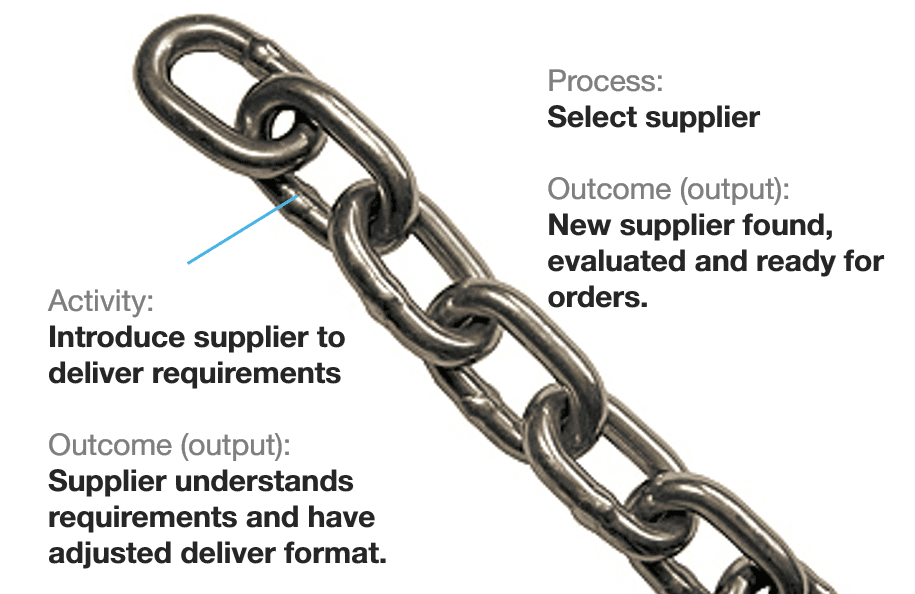
GLUU’S 8-STEP GUIDE TO PROCESS SUCCESS (1/8)
Succeed with your process improvement plan
Success rarely happens by accident. There’s a good process improvement plan behind most success cases. This guide can help you to prepare your own plan for involving and engaging your co-workers in the best way.
This guide is based on our six years of experience with helping customers to succeed with their process work. What is a success? We see it as higher levels of process maturity (read how to measure process maturity) that results in real, sustained improvement in your business.
“For improvement to flourish it must be carefully cultivated in a rich soil bed (a receptive organisation), given constant attention (sustained leadership), assured the right amounts of light (training and support) and water (measurement and data) and protected from damaging.”
– Stephen Shortell (Professor at Berkeley University, California.)
A template for your own process improvement plan
We’ve divided this guide into eight chronological steps, each with a number of smaller steps that are marked, so you can easily find your way.
Steps to process improvement
Below you’ll find the eight key steps to take on your journey to producing an effective process improvement plan. You don’t have to go through these sequentially. If you’re already comfortable with the basics you might want to go straight to your pain points using the table of contents below.
- Succeed with your process improvement plan
- Prepare a process collaboration tool
- Make a process hierarchy and a process blueprint
- Appoint, nominate and educate process owners
- Present to your colleagues
- Make process flow charts
- Stabilise your processes
- Maintain process improvement focus
The moving parts in process improvement
With this video, our founder Søren Pommer explains all the moving parts that you’ll have to get to work together…
Now, let’s align on terminology and get some basics in place…
What is a business process?
A business process explains what tasks are done in your business and it clarifies how to do them (when coupled with procedures and work instructions).
A business process consists of:
- An “output” or “outcome” which describes what the process should lead to or provide.
- Activities clarifying who is responsible for doing what. One activity’s output provides the input for your next activity.
- Work Instructions describe how each role should provide output for each activity.
What is the difference between a project and a process? A project is a one-off task. Processes are continuous actions. Consequently, you can think of a process as a chain of activities, performed by different roles that, together, produce the desired outcome.

(For more on this topic, read Why your project is really a process (and why you should care)
As such, the process creates the common view of work that enables the individual to understand what he or she should be doing, what the others are doing and what the systems do.
The crucial point is that the process is explicit.
Undocumented Processes do not exist.
With this basic understanding in place, let’s get to the process improvement plan.
Three questions to answer in any good process improvement plan
To make this common company language a reality and create a basis for continuous improvement, then you must answer three questions for your organisation:
- How do we communicate our way of working?
- Which method do we use to ensure that we execute correctly every time?
- How do we improve continuously?
The purpose of this guide is to help you to answer these questions by ensuring that:
- You link all processes with your company’s strategy. Here a ‘process hierarchy’ helps to identify the processes which support your customer experience, both directly and indirectly. It also shows how your processes fit together to provide a comprehensive view of your business model.
- Each process reflects reality. Each process needs a clear ‘process owner’ with the mandate and responsibility to implement and improve the process.
- Affected colleagues are included in the mapping process and work instructions.
- You continually work to ensure that processes are implemented and followed up on.
- Errors and ideas are collected, analysed and lead to continuous improvement in your processes and work instructions.
- The processes and improvements are maintained – even when key employees leave you.
The guide goes through each step on your way to success with processes.
Two recommendations before you start
Involve your co-workers early
With ‘you’ we mean you and your colleagues. To succeed in-process work, it is critical to involve colleagues as early as possible. They will only take full ownership if they themselves – or their close colleagues and managers – have helped to develop the processes and work instructions that they use. Your process improvement plan should begin with senior management and quickly involve as many employees as possible, following the flow we outline in this guide.
Localise the process work where you can
When working with business processes it is important to find the right balance between what you manage centrally and what is decentralised, or localised. Too much centralisation leads to processes not being used and maintained, while too much localisation leads to unnecessary duplication and inconsistency across the company.
With this being said try to localise process work as much as possible. It’s only when work instructions are created by the people who know how the real work is done that they reflect the real behaviour. The central team’s job is primarily to safeguard standards, frameworks and the quality of work. The central team also trains and supervises the process owners who do the actual process mapping together with selected colleagues.
| To manage centrally | To manage locally |
| Process hierarchy | Cross-functional processes |
| Organisational roles | Process examples or “blueprint” |
| Forms | Processes and work instructions |
| Editors | Tasks |
References:
- Interview with Bisnode about how their staff benefits from processes. Gluu 2016.
- Article: “Involve people early in continuous improvement,” Gluu 2012.
- This guide follows the recommendations from ISO’s process approach (PDF).
First up: Select your process collaboration tool
Let’s start! In order for you to keep everything in sync at all times, you will need a ‘process success platform’. Now, go to the next step of our guide, and Prepare your process collaboration tool.
To help you evaluate and select the best tools for managing and improving processes, explore our BPM Software Selection Guide for detailed recommendations.
